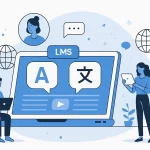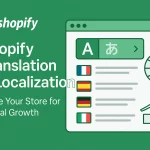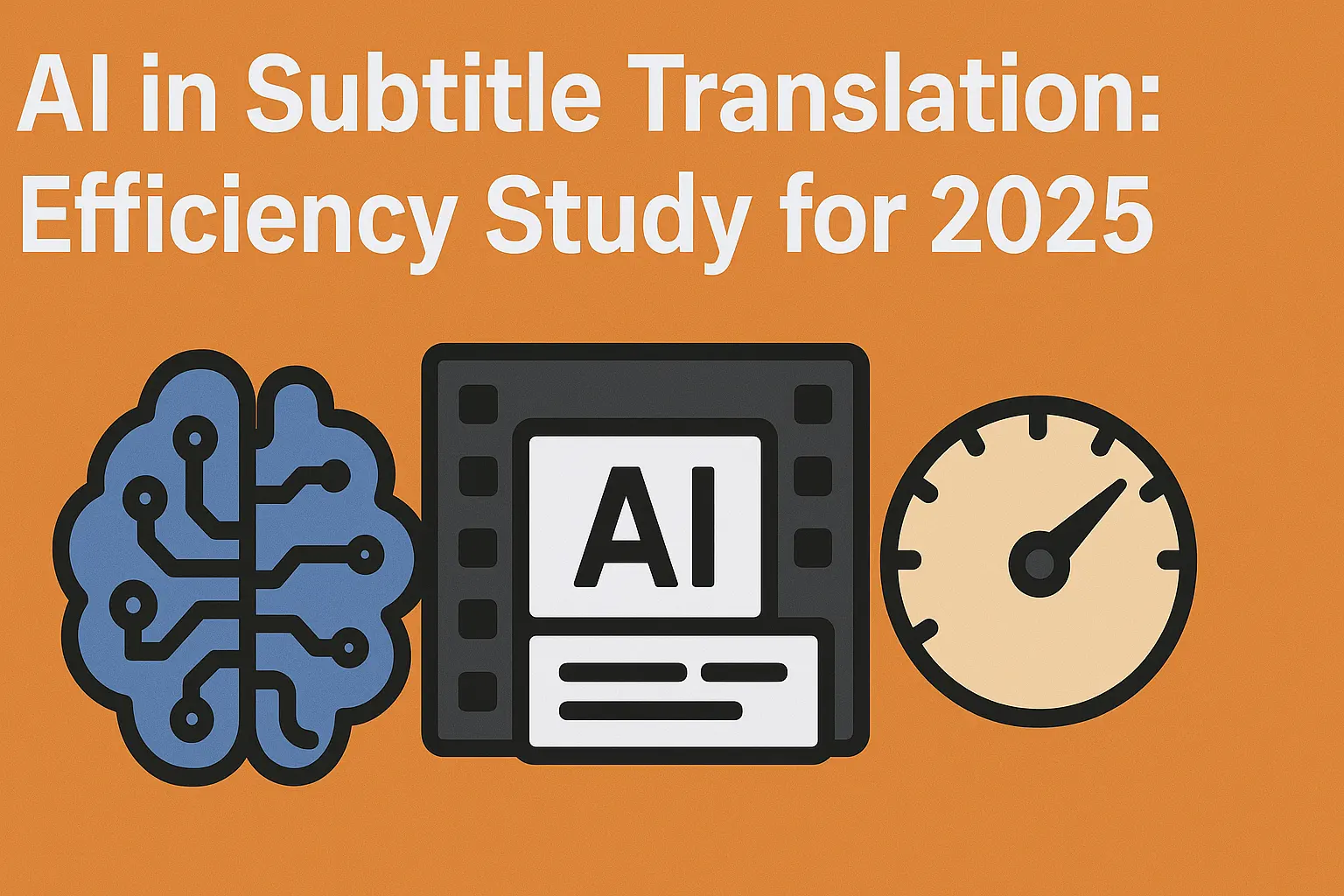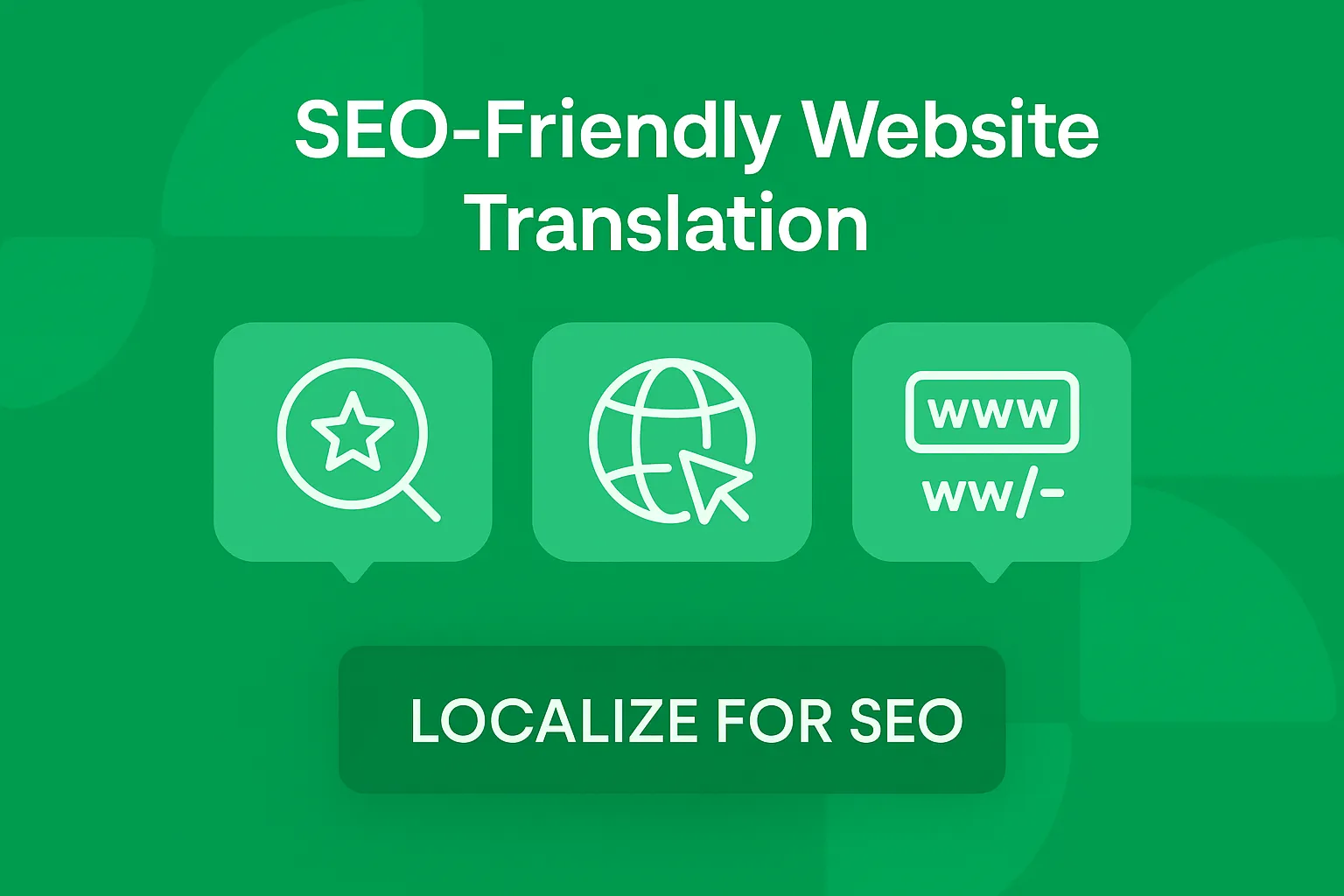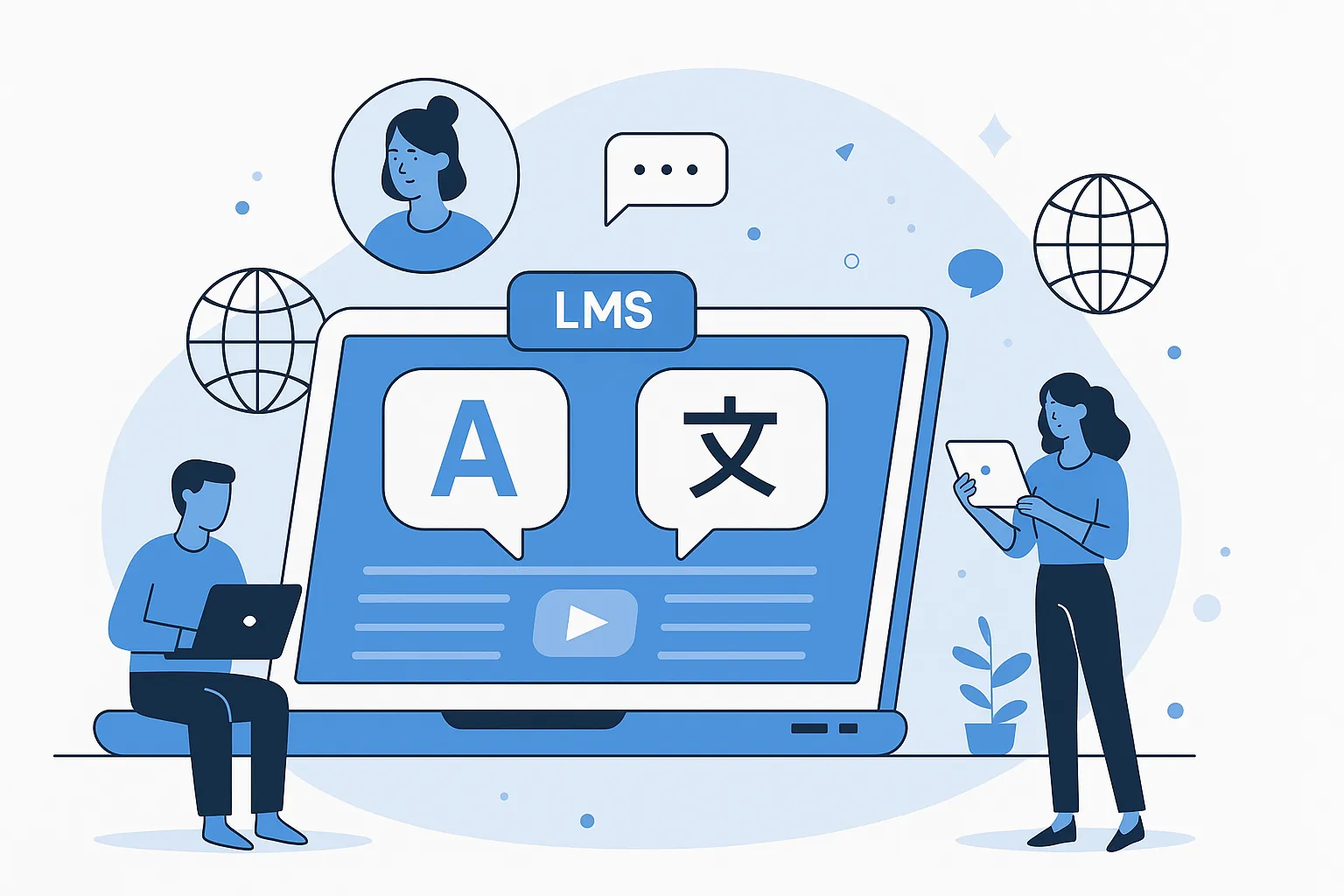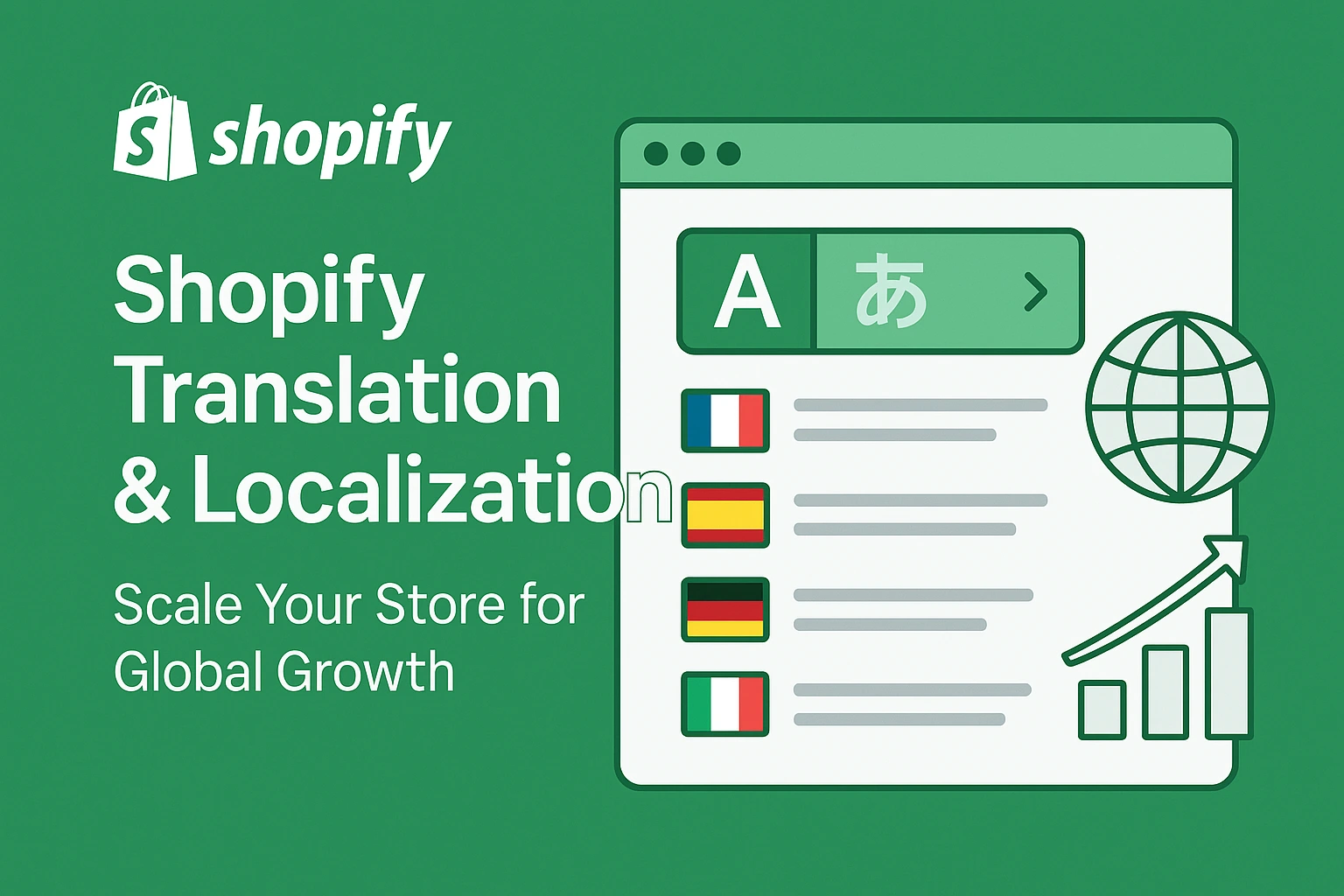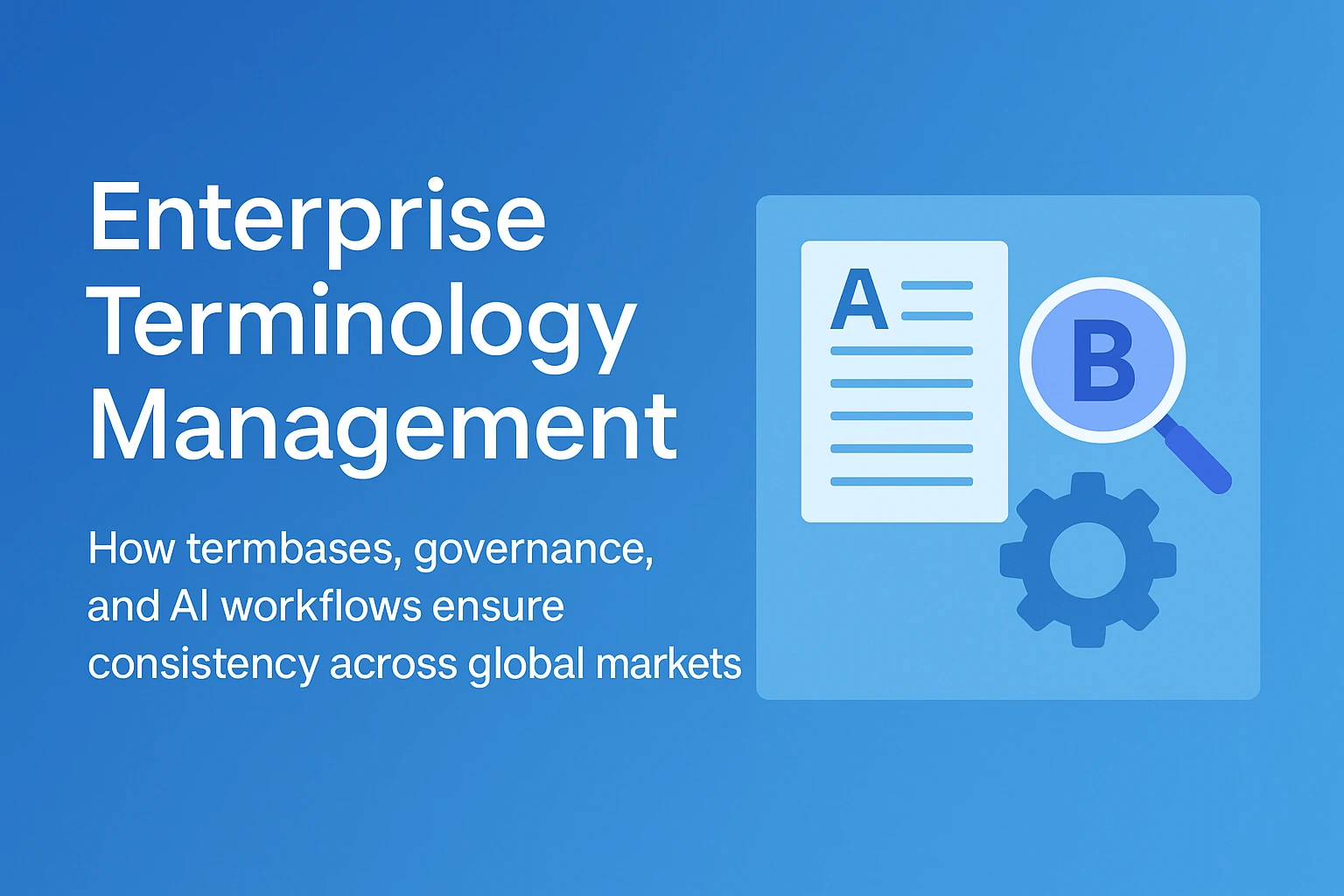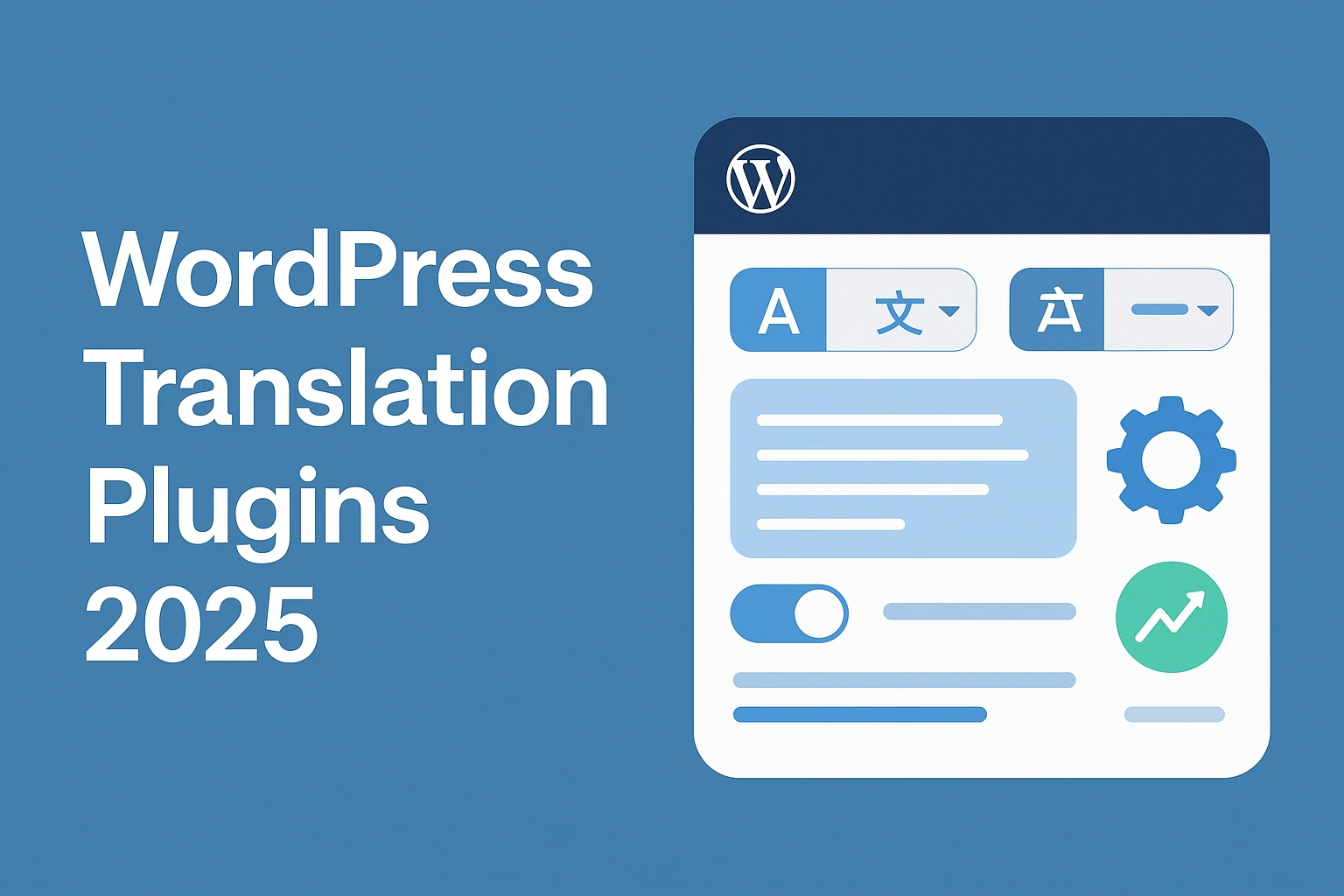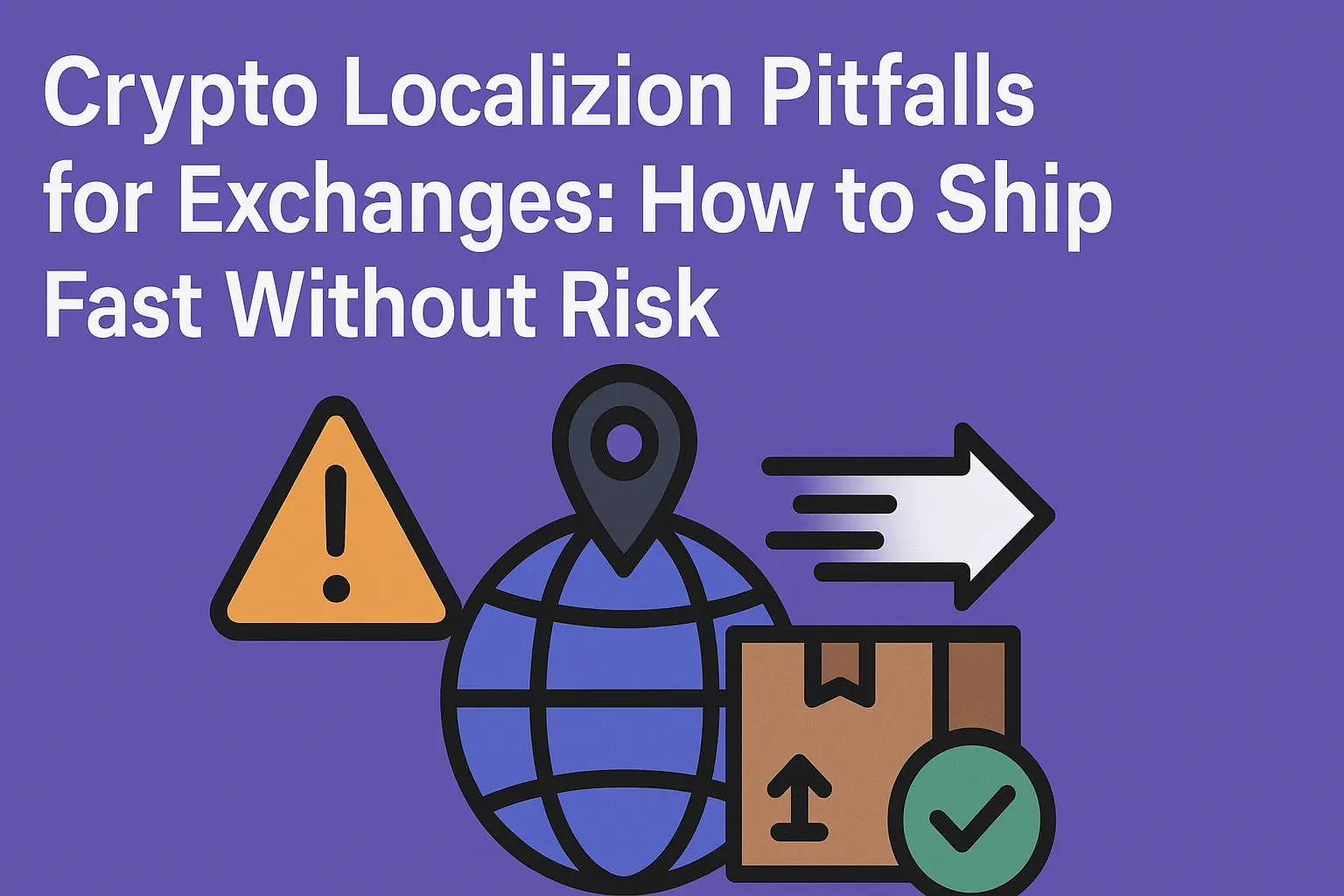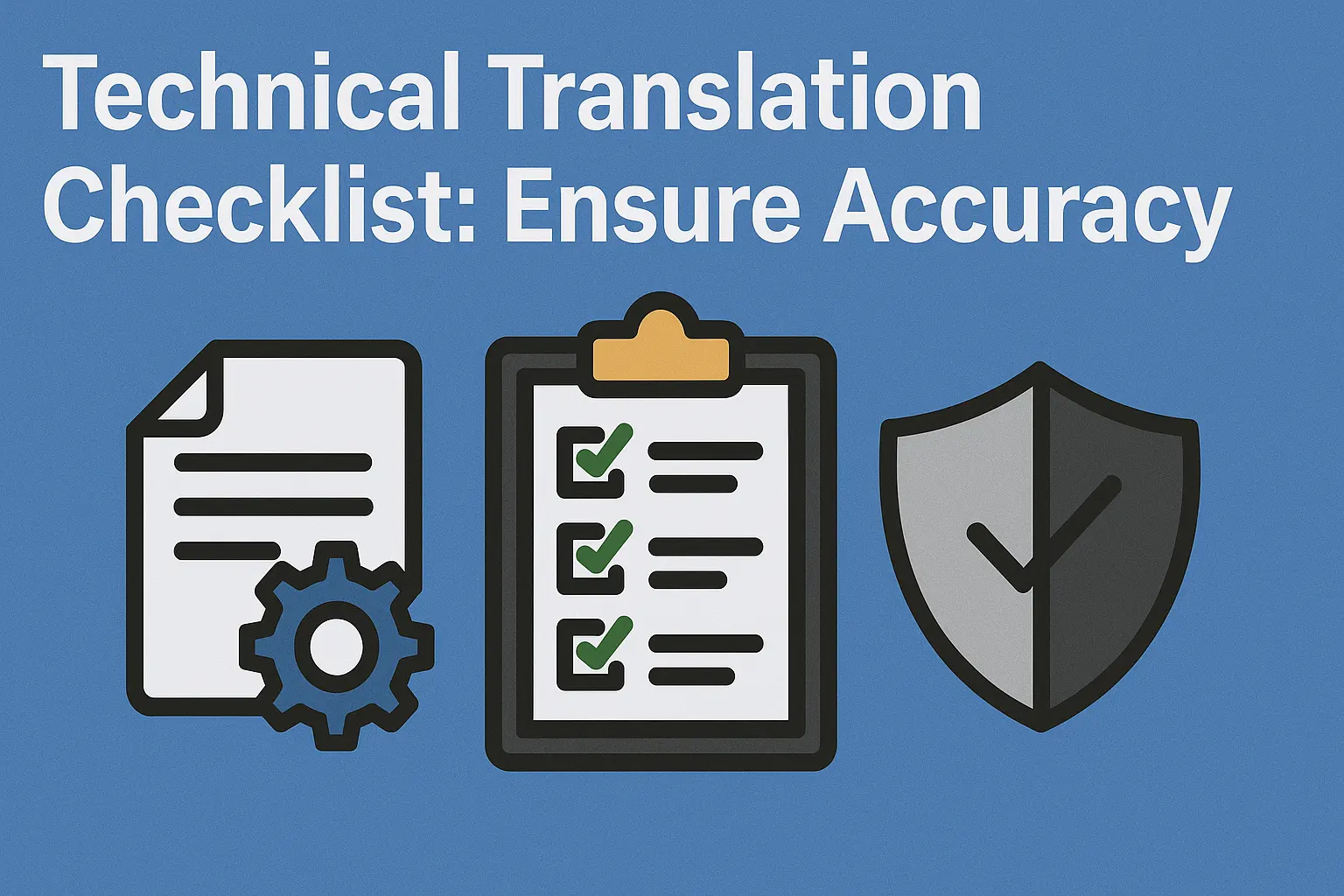In today’s media landscape, Subtitle translation has become the go-to option for global reach, compliance, and viewer engagement. And proper implementation of AI in subtitle translations is like a natural next step to it, because of its versatility in streamlining workflows.
Subtitle translation workflows encompass multiple steps, such as automatic speech recognition (ASR), machine translation (MT), segmentation into readable subtitle blocks, human post-editing, and final quality assurance (LQA).
AI tools like ASR and MT are great at accelerating the early stages. However, human expertise remains essential to ensure nuance, timing, and legal compliance.
Understanding how AI can enhance subtitle translation workflows while maintaining quality and readability is crucial for media companies, e-learning platforms, streaming services, and localization operations.
AI pipelines significantly reduce manual effort and can process a high volume of content. Pair that with human reviews for accuracy, cultural references, accessibility requirements, and brand voice – you’ve got yourself an efficient workflow that streamlines big batches of production whilst maintaining quality and compliance.
This study explores how AI in Subtitle Translation is being adopted across various media platforms and the resulting impact on productivity.
What does the AI subtitling workflow look like in practice?
AI assistance in subtitle translations is a multifaceted process that integrates multiple technologies into a coherent pipeline.
The workflow looks something like this: ASR → auto segmentation → MT → QC rules → human post-edit + LQA → export
- Automatic Speech Recognition:
The process begins here with Automatic Speech Recognition (ASR), which converts speech into text with timestamps.
- Auto Segmentation:
Auto-segmentation then divides the text into subtitle lines, optimizing for readability and timing.
- Machine Translation:
Machine translation (MT) handles the bulk of multilingual content, producing initial drafts in target languages.
- QC rules:
This step includes CPS limits, such as ≤42 characters/line, ≤17 CPS, 2 lines max, line lengths, reading speed thresholds, and timing constraints. And all that is automated with the help of AI.
- Human post-edit + LQA:
Finally, human post-editing and LQA refine the output, ensuring linguistic accuracy, cultural appropriateness, and synchronization with audio and visuals.
- Export:
Outputs can be exported in SRT, VTT, or TTML/DFXP formats depending on the platform, such as broadcast or e-learning LMS integration.
These are the general steps taken during the automation process, and are completely customizable to fit the project. This varying flexibility of the pipeline is what makes it so useful and popular in the industry.
Surely, not all the credit goes to AI for the workflow, and there are faces behind the automation. Human supervision is still required every step of the way. Let’s discuss where AI shines, and where a human approach is necessary:
Where does AI deliver efficiency? (TAT, throughput, batch scale)
For short assets, TAT reductions can be dramatic, with crazy deadlines like same-day or next-day delivery possible for 5–10 minute clips. Episodic content that benefits from batch processing: multiple episodes can be transcribed, translated, and segmented simultaneously, with a consistent glossary and style across an entire season.
AI shines its brightest when it comes to these fast-paced projects where the timeline – and the bulk of the project is more important than accuracy and nuances.
While efficiency gains vary depending on audio quality, domain complexity, and target language, industry estimates suggest 20–50% faster completion times compared with traditional human-only workflows. Parallelization and automated QC checks allow for predictable scheduling and reduced cycle time for high-volume content.
Where do humans remain essential? (nuance, timing, SDH, legal)
Human involvement is still a necessity in sensitive projects where nuance is key, and any mishap could lead to wrong translation and a potential compliance issue.
Subtitles for SDH (subtitles for the deaf and hard-of-hearing), including speaker IDs, sound effects (SFX), and accessibility markers, are a great example, as they require careful human review to maintain compliance and inclusivity standards.
Song lyrics, on-screen text, and brand-sensitive messaging, Legal disclaimers, copyright notices, and compliance messaging are similarly high-stakes areas where meticulous human review is required. These cannot be entrusted solely to automated systems due to potential regulatory exposure.
Circle Translations has achieved measurable TAT reductions for e-learning, gaming, and entertainment clients, while scaling throughput for high-volume assets. We apply a dual-track workflow: AI+human for efficiency, human-only for SDH, compliance, and brand-heavy assets.
How we’ll run the efficiency study (method & metrics)
To assess AI’s impact on subtitle translation, three content types were selected: webinars, marketing videos, and gameplay footage.
Each was processed using two approaches: AI-assisted (ASR+MT+segmentation + human post-edit) and human-only translation.
Metrics captured include: CFM, QC fail rate, CPS compliance percentage, edits per minute, review cycles, and stakeholder acceptance.
Results are tracked using downloadable CSV templates that capture timing, edits, and QC outcomes. By quantifying variance, confidence intervals provide procurement teams with a clear picture of potential outcomes. Instead of relying on optimistic projections, they can ground AI integration strategies in data, avoiding inflated efficiency expectations and enabling smarter resource allocation.
What do you think the results turned out to be?
Let’s discuss them in different categories:
Accuracy, readability & cognitive load
- AI-generated subtitles can achieve high raw accuracy; however, human revision is essential to optimize readability and minimize cognitive load.
Or, in layman’s terms, AI-generated subtitles are high in accuracy, but aren’t very readable, and require human revision to become useful.
Studies evaluating LLM-generated subtitles versus professional human subtitles indicate that timing, segmentation, and CPS compliance directly affect viewer comprehension.
Subtitles that exceed CPS limits or improperly segment speech can be very hard to read, leading to disengagement or misunderstanding.
Human review corrects ASR errors, ensures accurate speaker attribution, maintains brand tone, and aligns timing with video pacing.
Eye-tracking research and NER/MQM scoring provide measurable proxies for cognitive load, demonstrating the need for human oversight even when raw ASR/MT output is technically correct.
Customization with LLMs (domain terminology & audience)
Large language models (LLMs) enable advanced customization for domain-specific content, whether technical, marketing, or e-learning. Prompts and fine-tuning allow MT output to adhere to client-approved glossaries and style guides, preserving consistent terminology across multilingual subtitles.
Human SMEs validate terms before deployment to prevent mistranslation or inconsistency. This approach allows high-volume content to maintain linguistic accuracy while reflecting domain-specific nuance, reducing revision cycles and maintaining brand integrity.
Compliance & security: how we protect your media
Here are various measures taken by professionals to protect your data during processing:
- NDAs for Linguists:
Every linguist handling sensitive content should be bound by a non-disclosure agreement (NDA). This ensures that corporate training, legal files, or educational materials are never exposed or shared outside of the project.
- Encrypted Storage:
All media files and translations must be stored using enterprise-grade encryption. This prevents unauthorized access during storage and transfer, protecting confidential data against breaches and leaks.
- Access Controls:
Implementing least-privilege access is essential. Translators, editors, and project managers should only access the files they need for their role. Once tasks are completed, permissions must be revoked immediately, ensuring no lingering access points remain vulnerable.
- Secure Portals:
Content should move exclusively through secure portals designed for enterprise projects. These platforms use multi-factor authentication, version control, and safe upload/download protocols, guaranteeing safer collaboration.
- Audit Trails:
Every action within the localization workflow should leave a digital trace. Audit trails track who accessed a file, when edits were made, and which approvals were granted.
- GDPR Compliance:
For global enterprises, GDPR compliance is non-negotiable. Proper handling of personal data, such as user details, legal case files, or student information, ensures the project aligns with EU data protection laws, avoiding legal penalties and reputational damage.
- ISO 17100 Certification:
ISO 17100 certification guarantees adherence to international translation standards. It confirms that workflows, quality checks, and reviewer roles follow an established structure, offering enterprises confidence in both security and linguistic accuracy.
- SOC 2 Certification:
SOC 2 certification demonstrates that systems are independently audited for security, availability, and confidentiality. For enterprise clients, this is a strong assurance that their content is processed within a framework of tested and validated security practices.
Cost & ROI: when does AI+human beat human-only?
The cost and ROI can vary greatly across projects. It depends on a multitude of factors, among which are risk level and the workflow used in response to that. This determines the project’s trajectory and helps compute the cost and ORI accurately.
Here’s a simple table that depicts a few different content types, how sensitive they are, and the workflow best suited for them:
| Content Type | Risk Level | Recommended Workflow |
| Legal/Compliance | High | Human-only |
| Brand-heavy Marketing | High | Human-only |
| E-learning Webinars | Medium/Low | AI+Human |
| Gaming/UGC Content | Low | AI+Human |
| Short Promotional Clips | Low | AI+Human |
Procurement teams benefit from transparency in pricing tiers, which clarify the cost implications of AI-assisted versus human-only workflows. However, these costs depend on the scope as well as the application of the project.
Circle Translations’ pricing tiers (Basic, Business, Pro, Custom) give procurement teams a clear view of when AI+human workflows lower CFM without quality trade-offs.
File engineering & DTP: formats we support
Deliverables can vary across different projects, as we’ve seen that each project has unique requirements.
With that said, keeping track of all the different formats, fonts, and styles can be a messy task.
To make life easier, we’ve created a list that encapsulates all that in a digestible format:
- Subtitle & Caption Formats:
Support for SRT, VTT, TTML/DFXP, XML exports, and burned-in subtitles to cover broadcast, OTT, and streaming requirements.
- On-Screen Text Localization:
Adaptation of graphics, branding elements, and text overlays, ensuring readability within safe areas and seamless transitions across shot changes.
- Forced Narratives:
Proper handling of subtitles for foreign dialogue, signage, or critical narrative text, tailored to client and platform specifications.
- Font & Styling Requirements:
Full compliance with client-specific fonts, size, positioning, and styling rules to maintain brand and platform alignment.
- DTP & Format Integrity Checks:
Checklist-driven reviews for formatting accuracy, aesthetic consistency, and adherence to broadcast/OTT technical guidelines.
Quality gates we apply (rule-based + human)
QC rules enforce formatting rules, such as CPS, lines/segments, punctuation, shot change sync., etc., professional subtitlers need to follow.
This could look different across multiple projects, and AI-assisted workflows need to get double-checked for basic QC fixes like overlapping subtitles, correcting mistranslated idioms, and adjusting CPS to maintain readability.
Circle Translations enforces dual-layer QA: automated CPS/rule checks + second-linguist human review, to ensure your project is just right.
Use cases: live events, UGC, long-form & training
Perhaps the greatest success of AI integration in subtitling is live captioning. Live captioning prioritizes latency versus accuracy; AI can provide near-real-time transcription, but human oversight improves quality for critical moments.
User-generated content (UGC) benefits from scale, as AI processes thousands of short clips rapidly. E-learning also greatly benefits from this, even more so if live classes are involved. This way, not only learning is boosted for the participants, but participants with difficulty in hearing can also take part confidently instead of feeling left behind.
RFP checklist for AI-enabled subtitling vendors
- ISO 17100 certification
- MQM/DQF-based LQA model
- Linguist vetting and experience with ASR/MT workflows
- Client-owned glossary and style guide management
- CPS rulebook and format compliance
- File format support (SRT, VTT, TTML, burned-in)
- Security posture: NDA, encrypted storage, secure portals, access control
- Sample QC report and audit trail
- SLA metrics (turnaround, edits per minute, QC fail rate)
- References & case studies
Circle Translations provides an RFP-ready compliance pack, including ISO alignment, sample QC reports, and SLA metrics.
Why Choose Circle Translations
Circle Translations combines operational excellence with consultative support, enabling enterprises to scale subtitle localization safely and efficiently.
Here’s what sets us apart:
- Native SME Linguists: Over 120 languages, including industry-specific expertise.
- Hybrid AI+Human Workflow: Efficiency without sacrificing quality for high-risk content.
- ISO-Aligned QA: MQM/DQF scoring ensures consistent LQA standards.
- 24/7 Dedicated PM: Real-time support and progress tracking.
- Secure Handling: GDPR-compliant portals, NDAs, and encryption.
- Proven ROI: Documented TAT reduction, lower CFM, scalable delivery.
- Client Glossary Ownership: Ensures brand consistency and control.
Sum Up
This comprehensive study demonstrates that AI, when properly integrated with human oversight, provides measurable efficiency gains, cost savings, and scalable subtitle translation. This doesn’t necessarily mean AIs can be put to use instead of paying people to do the same job.
The best approach to a workflow is to blend AI capabilities with human expertise. This way, less significant yet bulky portions of a project can be blitzed through with AI, and a simple LQA check effectively finishes the job. Then the human expertise comes into play with sensitive portions of the project. This prevents ambiguity and ensures quality and compliance.
Circle Translations makes use of this dual-track workflow, secure infrastructure, glossary management, and 24/7 PM coverage to ensure enterprise clients can deploy AI-enabled subtitling without sacrificing quality, compliance, or brand integrity. By combining thought leadership, consultative guidance, and service-oriented execution, organizations can confidently adopt AI workflows for high-volume, multi-language subtitling projects in 2025.
FAQ Hub — AI in Subtitle Translation
- How much faster is AI-assisted subtitling versus human-only?
Depending on audio quality, domain, and asset type, TAT reductions range from 20 – 50%. Short webinars and episodic content benefit most, while brand/legal-heavy assets still require human-only review.
- Is AI accurate enough without human review?
No. ASR/MT accelerates initial transcription, but human post-editing is essential for CPS compliance, nuance, idiomatic translation, and SDH accessibility.
- Do AI-generated subtitles increase cognitive load?
Potentially, yes. Raw MT may mis-segment lines or misinterpret fast speech. Human QC optimizes readability, timing, and viewer comprehension.
- Can AI handle SDH and accessibility requirements?
Partially. Speaker IDs, sound effects, accessibility labels, and regulatory text require human expertise to meet legal standards.
- What files can you deliver?
SRT, VTT, TTML/DFXP, burned-in, plus bilingual review files and change logs. On-screen text localization included.
- When should we choose human-only over AI+human?
Legal, compliance, SDH, brand-sensitive, or humor/idiomatic-heavy content. Low-risk narrative content can leverage AI+human with strict QA.
- How do you secure media and data?
NDA-bound workflows, encrypted storage, secure portals, least-privilege access, and GDPR-compliant processes. Security packs available upon request.





